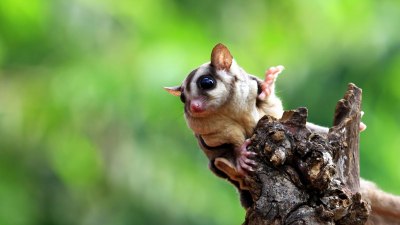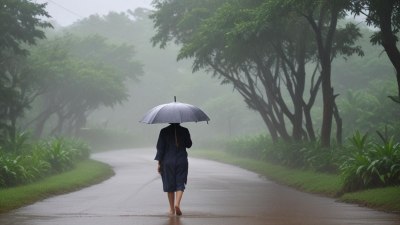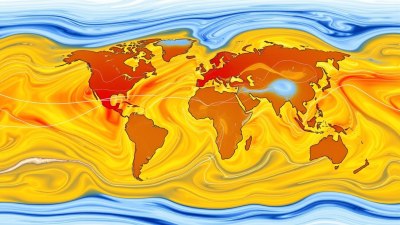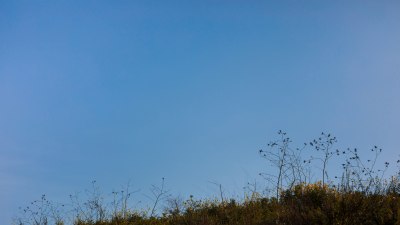How Animals Sense Weather Changes Before We Do
Explore how animals detect weather changes instinctively, often better than humans.

Image by kuritafsheen77 on Freepik
Throughout history, humans have turned to animals for insights into impending weather changes. From birds flying low to dogs acting restless, the behaviors of various species often provide clues about shifting weather patterns. Understanding how animals sense these changes can deepen our appreciation of nature's intricate web and enhance our awareness of environmental shifts.
The Sensory Abilities of Animals
Animals possess unique sensory adaptations that allow them to detect subtle changes in their environment. These adaptations often exceed human capabilities, granting them the ability to perceive changes long before we can. For instance, animals can detect shifts in barometric pressure, temperature, humidity, and even electromagnetic fields.
Barometric Pressure Changes
Many animals are particularly sensitive to changes in barometric pressure. As a storm approaches, the pressure often drops, and animals can sense this change. Birds, for example, are known to alter their flight patterns or exhibit restlessness when a storm is on the horizon. Scientists believe that birds can detect minute changes in pressure with their air sacs, leading them to seek shelter before a downpour.
Animal Behavior Before Storms
Observing animal behavior can serve as a reliable indicator of impending weather changes. For example, many pet owners notice their dogs acting anxious or agitated before a storm. Research indicates that dogs can hear the low-frequency rumbles of thunder earlier than humans and may sense changes in atmospheric pressure and electricity, prompting their anxious behavior.
Humidity and Temperature Sensitivity
Changes in humidity and temperature can also influence animal behavior. Some species, like frogs and toads, are known to call more frequently as humidity rises, indicating the approach of rain. Following heavy rain, frogs often emerge in droves, taking advantage of the moist environment for breeding. This behavior not only illustrates their awareness of changing conditions but also their dependency on them for reproductive success.
The Role of Smell
The sense of smell plays a significant role in how animals detect weather changes. Many mammals, especially those that rely on scent for hunting or communication, can detect changes in odor that correlate with shifts in the weather. For instance, animals may become agitated when they sense moisture in the air, which often precedes rainfall. Dogs, with their highly developed olfactory systems, have been known to exhibit signs of excitement or fear as they detect the chemical changes in the atmosphere before a storm.
Electromagnetic Sensitivity
Some animals have the unique ability to perceive electromagnetic fields, allowing them to sense impending weather changes. For instance, sharks and rays possess electroreceptors that help them detect electrical signals in their environment. Certain studies have also suggested that animals like pigeons and bees can sense changes in the Earth's magnetic field, which may influence their migratory patterns or foraging behavior. This sensitivity could make them privy to weather changes that humans cannot perceive.
The Influence of Instinct and Evolution
The ability of animals to sense weather changes is often attributed to evolutionary adaptations. Species that could respond to environmental signals may have had a greater chance of survival, leading to the development of these heightened sensory capabilities. Over time, behaviors that promoted awareness of weather changes became instinctual, ingraining themselves into the survival mechanisms of various species.
Farming and Animal Behavior
Many farmers have learned to watch their animals closely for signs of changing weather. Cattle may gather in groups, horses may become restless, and chickens tend to retreat into their coops as storms approach. These observations have fostered a deeper understanding of how interconnected farming practices are with animal instincts. By learning to interpret these behaviors, farmers can better manage their livestock and make informed decisions about their agricultural activities.
Folk Wisdom and Animal Behavior
Anecdotal evidence suggests that humans have long relied on animal behavior as a weather forecasting tool. Phrases such as “when cows lay down, rain is coming” or “when ants build their hills high, expect a dry spell” reflect the observations made by generations before us. While many of these sayings lack scientific grounding, they illustrate the longstanding relationship between humans and animals in understanding weather patterns.
The Future of Weather Prediction
Despite advancements in technology and meteorology, there is something to be said for the age-old wisdom of observing animal behavior. Scientists continue to research how animal responses to environmental changes can contribute to more accurate weather predictions. Incorporating insights from animal behavior into meteorological models may improve our understanding of weather systems and enhance forecasting accuracy.
As we move forward in an era defined by climate change and increasing weather extremes, understanding how animals sense weather changes can be invaluable. Their instincts provide a unique perspective on our environment, enhancing our appreciation for the natural world. By recognizing the signals that animals provide, we can foster a deeper connection to nature and improve our preparedness for weather events. Observing the animal kingdom can remind us of the intricate relationships within ecosystems and the remarkable adaptations that allow wildlife to thrive alongside us.











